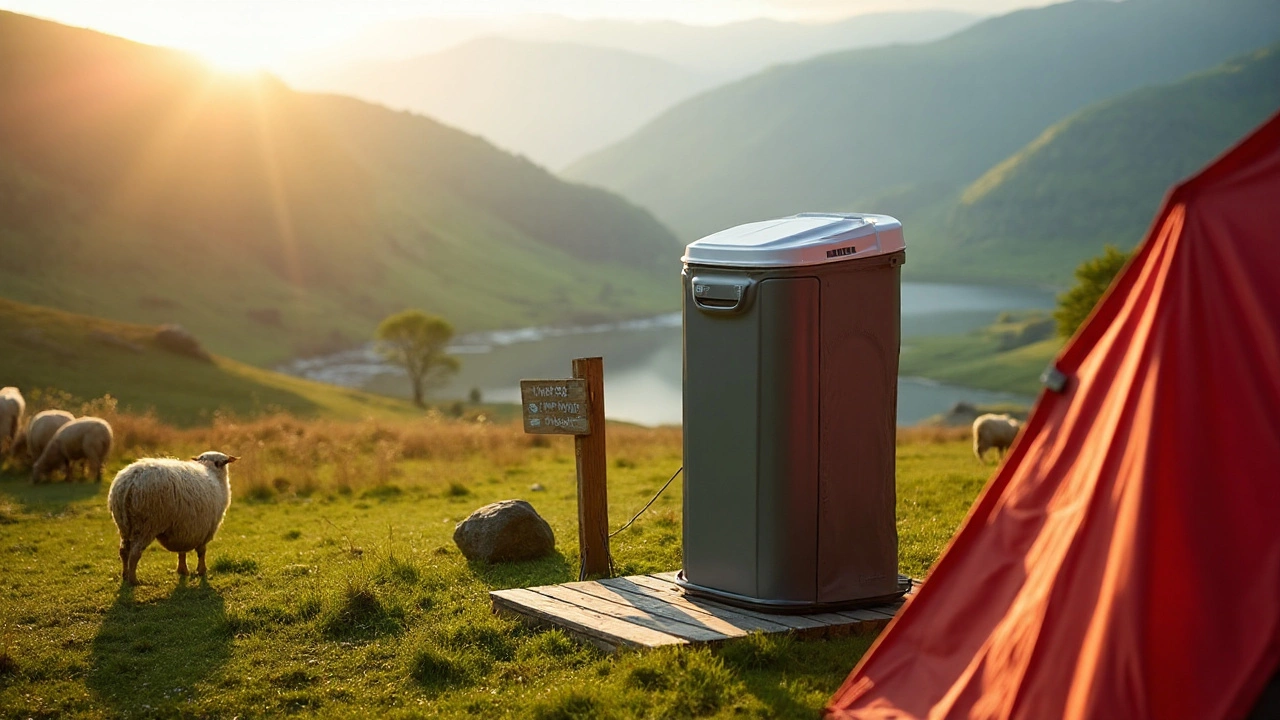Camping Toilet Basics: Pick, Use, and Keep Your Portable Loo Clean
Heading out with a motorhome or a tent? A good camping toilet can make the difference between an enjoyable break and a miserable one. Below you’ll get straight‑forward advice on selecting the right unit, using it safely on the road, and keeping it fresh for the whole trip.
Choosing the Right Camping Toilet for Your Trip
First thing – know the three main types. The basic bucket‑style works for short stays and costs almost nothing. Chemical toilets use a waste‑holding tank and a blue liquid that breaks down solids; they’re quieter and odour‑free for longer trips. Composting models turn waste into safe material and need no chemicals, but they are bulkier.
Ask yourself three questions: How many people are traveling? How long will you be away from dump stations? How much space do you have in your motorhome or campsite?
If you’re a solo camper for a weekend, a bucket with a biodegradable liner is fine. For families or long‑haul road trips, a chemical toilet with a 10‑liter tank saves you from daily emptying. When you’re on a sustainable adventure and have room, a composting unit pays off in zero‑chemical use.
Setting Up and Using Your Camping Toilet Properly
Placement matters. Keep the unit on a level surface, away from direct sunlight, and close to a water source for easy cleaning. Most chemical toilets have a refill port – pour the recommended solution before each use to keep smells down.
When you’re ready to go, use a disposable bag or a toilet paper that breaks down quickly. Avoid flushing anything other than waste and toilet paper – wipes, feminine products, and diapers can clog the system.
After you’re done, close the lid tightly. This prevents animals from getting curious and stops any odor from escaping. If your toilet has a vent pipe, make sure it points upward so gases can escape safely.
Cleaning and Maintaining Your Portable Toilet
Quick clean‑up after each use extends the life of the tank. Rinse the bowl with a little water and wipe the interior with a mild biodegradable cleaner. For chemical tanks, empty them at an approved dump station – many motorhome parks have this service for free or a small fee.
Composters need a bit more attention. Stir the contents weekly to speed up the breakdown process, and add a sprinkle of compost starter if the manufacturer recommends it. When the tank is full, seal it according to the instructions and let it sit for a few weeks before disposal.
Inspect seals, hoses, and the tank lid regularly. A cracked seal can lead to leaks, which are messy and smelly. Replacing a cheap silicone seal is easier than fixing a flooded campsite.
Lastly, keep spare chemicals, cleaning wipes, and a small hand‑pump for water on hand. A well‑stocked kit means you won’t scramble for supplies mid‑road.
With the right toilet, simple setup steps, and regular maintenance, you’ll never dread nature’s call again. Your next adventure can focus on scenery, not on bathroom woes.
Where to Go to the Bathroom When Camping - Your Complete Guide
Discover the best bathroom solutions for camping, from portable toilets to cat holes, with practical tips, comparison tables, and LeaveNoTrace advice.
